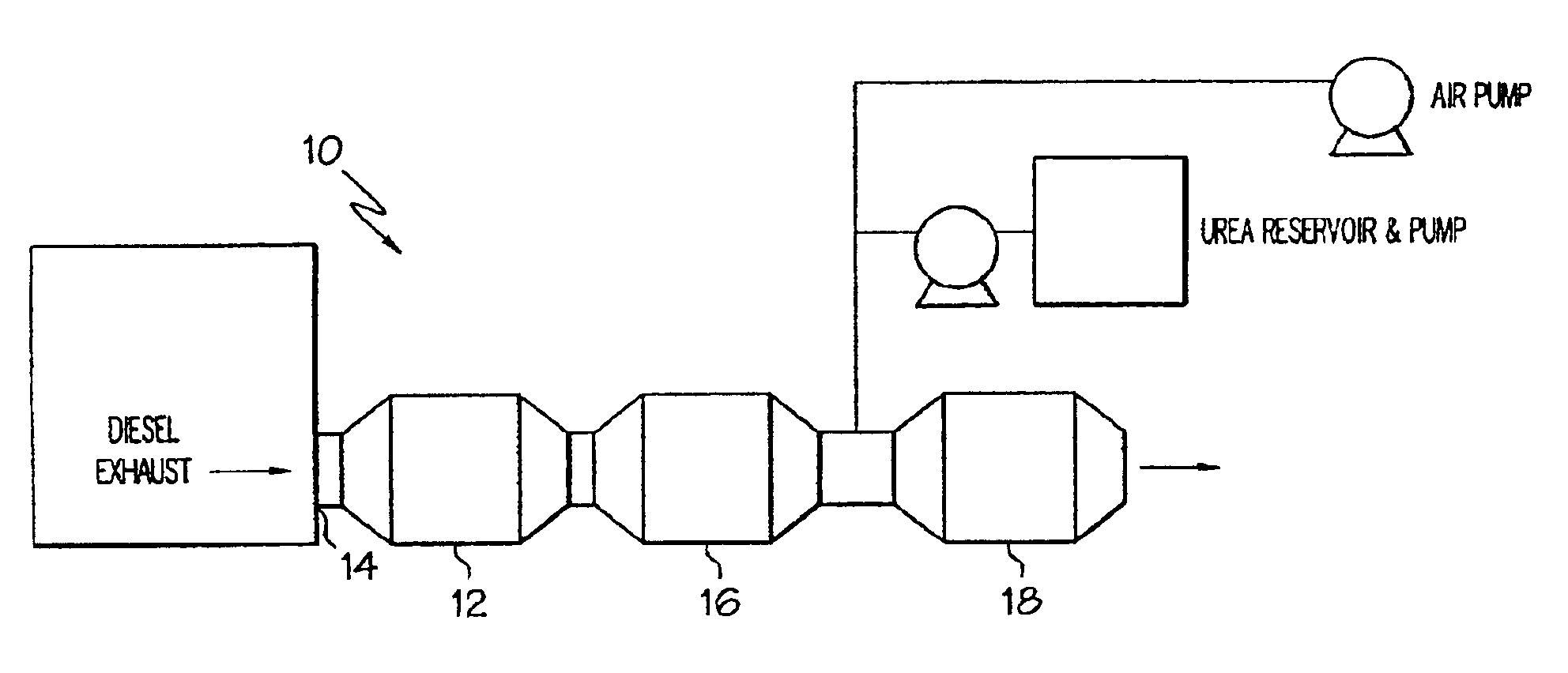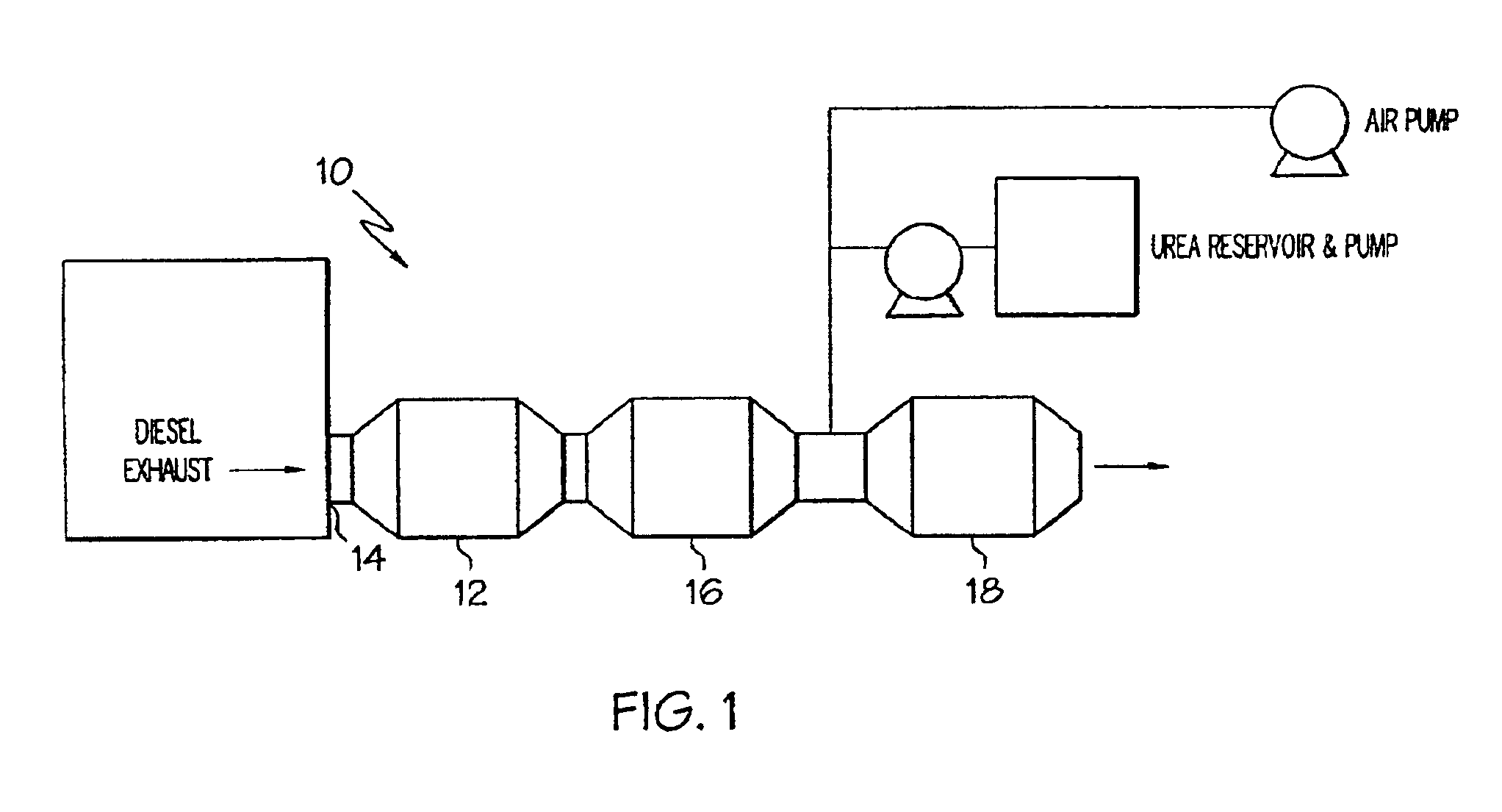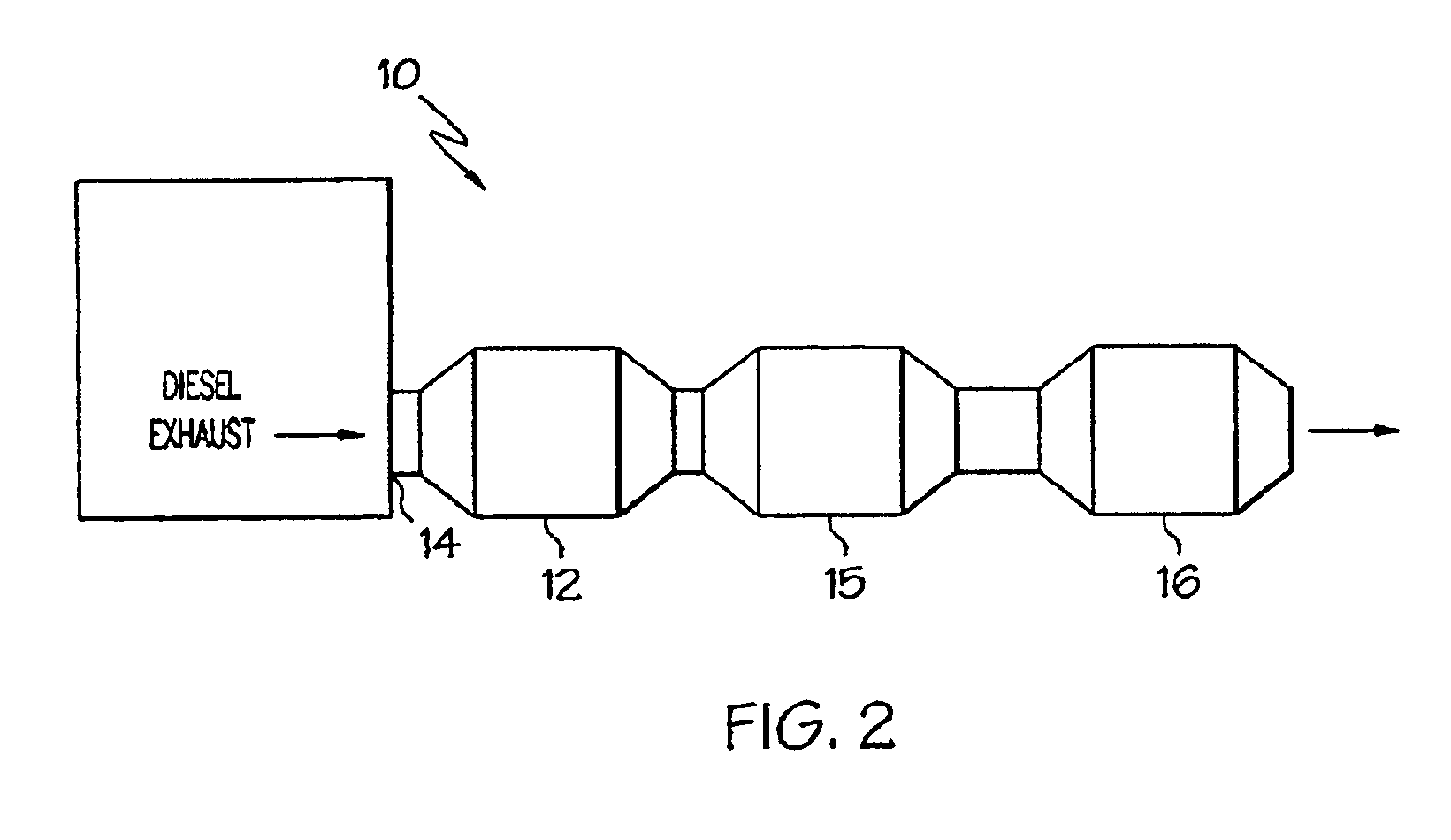Method of treating diesel exhaust gases
a technology of diesel exhaust gas and compression ignition engine, which is applied in the direction of machines/engines, separation processes, mechanical equipment, etc., can solve the problems of no conversion to no.sub.2, affecting the oxidation of particulate captured, and the thermodynamic limitations of no conversion to no.sub.2. achieve the effect of increasing the catalyst activity
- Summary
- Abstract
- Description
- Claims
- Application Information
AI Technical Summary
Benefits of technology
Problems solved by technology
Method used
Image
Examples
Embodiment Construction
ZrO.sub.2 -stabilized Pt / SiO.sub.2 oxidation catalysts were made in accordance with the present invention. The performance of the catalysts was tested in a fixed-bed tubular quartz reactor. The catalyst loading was selected as 66 mg for all samples. The samples were plugged with quartz wool. The reaction temperature was detected by a K-type thermocouple inserted into the catalyst bed. The flow of reagent gases was maintained by individual mass flow controllers. The concentrations of NO and NO.sub.2 were continuously measured using an NO / NO.sub.x Beckman analyzer model 951A. All the activity measurements of the catalysts were obtained using a total feed flow rate of 100 cm.sup.3 / min. with a gas hour space velocity of 47250 h.sup.-1. The composition of the reaction mixture was 500 ppm of NO, 3% vol. of O.sub.2, and N.sub.2 as the balance. To reduce Pt compounds in the samples to metallic platinum before testing, the samples were treated in a mixture of 3% H.sub.2 in nitrogen. Some sa...
PUM
| Property | Measurement | Unit |
|---|---|---|
| temperature | aaaaa | aaaaa |
| temperature | aaaaa | aaaaa |
| temperature | aaaaa | aaaaa |
Abstract
Description
Claims
Application Information
 Login to View More
Login to View More - R&D
- Intellectual Property
- Life Sciences
- Materials
- Tech Scout
- Unparalleled Data Quality
- Higher Quality Content
- 60% Fewer Hallucinations
Browse by: Latest US Patents, China's latest patents, Technical Efficacy Thesaurus, Application Domain, Technology Topic, Popular Technical Reports.
© 2025 PatSnap. All rights reserved.Legal|Privacy policy|Modern Slavery Act Transparency Statement|Sitemap|About US| Contact US: help@patsnap.com



